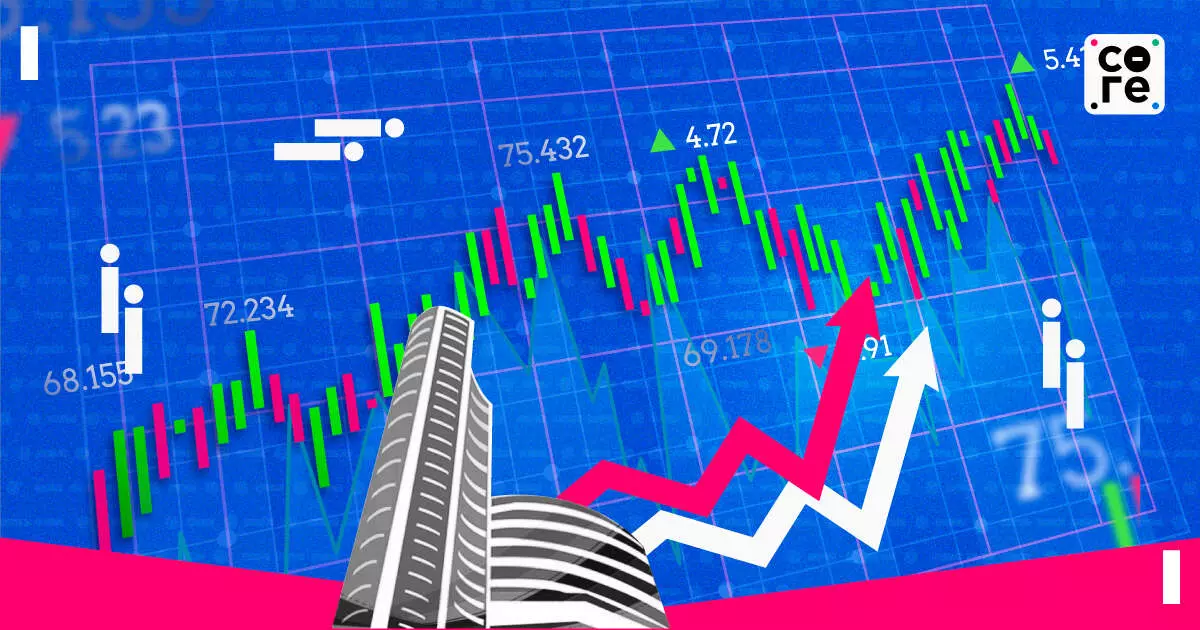
What To Expect From Stock Markets For The Second Half Of 2024
Indian stock market's diversity allows retail, institutional as well as foreign investors to make suitable investments, improving confidence.

India marked the end of the first half of this calendar year with markets reaching an all-time high. The Nifty 50 index reached 24,174 points on June 27. This 1000-point rally was the fastest ever for the index and the market took 17 sessions to breach the 24,000 benchmark.
Investing in the Indian market has fared well for investors historically, however, it lost this cache during the 2008 to 2015-16 period in the aftermath of the global financial crisis. “But in the last 3-4 years, corporate earnings have now started growing again. And as a percentage of GDP, they're growing very fast,” Ajay Bagga, veteran stock market expert, told The Core.
Of late, a cleanup of the books of banks and corporates has opened new windows of opportunity. “We have written off Rs 16 lakh crores of NPAs (Non Performing Assets) and bank NPA is down to about two and a half percent,” Bagga said. This has given banks the capacity to lend again. Simultaneously, corporates that had gone very heavy on leverage between 2008 and 2011 are now sitting on lower leverage, can absorb more growth capital, and take on more debt.
The Diversity Of India’s Stock Market
This latest benchmark has also renewed concerns of investors and critics regarding the valuation of the market. India’s forward earnings are 23 times as compared to 7 times Brazil’s. This signifies that on paper, valuation multiple of the Indian stock market is much higher than contem...
India marked the end of the first half of this calendar year with markets reaching an all-time high. The Nifty 50 index reached 24,174 points on June 27. This 1000-point rally was the fastest ever for the index and the market took 17 sessions to breach the 24,000 benchmark.
Investing in the Indian market has fared well for investors historically, however, it lost this cache during the 2008 to 2015-16 period in the aftermath of the global financial crisis. “But in the last 3-4 years, corporate earnings have now started growing again. And as a percentage of GDP, they're growing very fast,” Ajay Bagga, veteran stock market expert, told The Core.
Of late, a cleanup of the books of banks and corporates has opened new windows of opportunity. “We have written off Rs 16 lakh crores of NPAs (Non Performing Assets) and bank NPA is down to about two and a half percent,” Bagga said. This has given banks the capacity to lend again. Simultaneously, corporates that had gone very heavy on leverage between 2008 and 2011 are now sitting on lower leverage, can absorb more growth capital, and take on more debt.
The Diversity Of India’s Stock Market
This latest benchmark has also renewed concerns of investors and critics regarding the valuation of the market. India’s forward earnings are 23 times as compared to 7 times Brazil’s. This signifies that on paper, valuation multiple of the Indian stock market is much higher than contemporary emerging markets. However, Bagga said that this premium is by virtue of the diversity of the Indian stock market.
“It's a very diverse market, unlike quite a few other emerging markets, which are either commodity-based or say a Taiwan market, which is a semiconductor-based market, 60-70% of the market is semiconductors,” Bagga said.
India stock markets are also deriving confidence from other factors, too, according to Bagga. For one, underperforming IT service companies have been offset by new sectors. The chemicals sector did very well during the Covid-19 years but an increase in Chinese supply led to a temporary oversupply which has normalised now; pharmaceutical companies are doing well with the Nifty Pharma index also hitting an all-time high early this year; and private banks are returning from under-performing to well-performing status.
Even IT companies are expected to see a revival in the coming months as they start bridging the gap between their clients and those developing AI-enabled services that can help companies digitise, automate and quicken tasks, Bagga said.
Investments in infrastructure developments have given the government big revenues which are creating an economic boom and lastly, monthly investment plans such as SIPs (strategic investment plans) are bringing Rs 20,000 crore monthly from domestic investors. “All that is helping in terms of the market perception,” Bagga said.
Small, Mid Or Large Caps?
Large-cap stocks have served as cushions for investors which would also mean that despite being already well valued, some stocks might benefit and those are typically larger, older, legacy, trusted brands. For foreign investors, especially, even India’s large caps aren’t large enough.
“Whenever I used to run foreign fund houses or brokerages, we would look at the impact cost that if half the market went away and you were the other half of the market, how would you get out? How long would it take?” Bagga said. With this investment thesis, the mid and small caps are completely ruled out as the impact costs are too high, the brokerage coverage is not great, there is fabrication of accounts and meeting those companies doing on-the-ground research is very time-consuming.
However, Bagga believes that domestic investors shouldn’t miss the small-cap and mid-cap rally and he advises that mutual funds are the route to take. “You don't need to do all that hard work in trying to pick up those stocks. Large caps, you want to do direct,” he said.
Indian stock market's diversity allows retail, institutional as well as foreign investors to make suitable investments, improving confidence.

